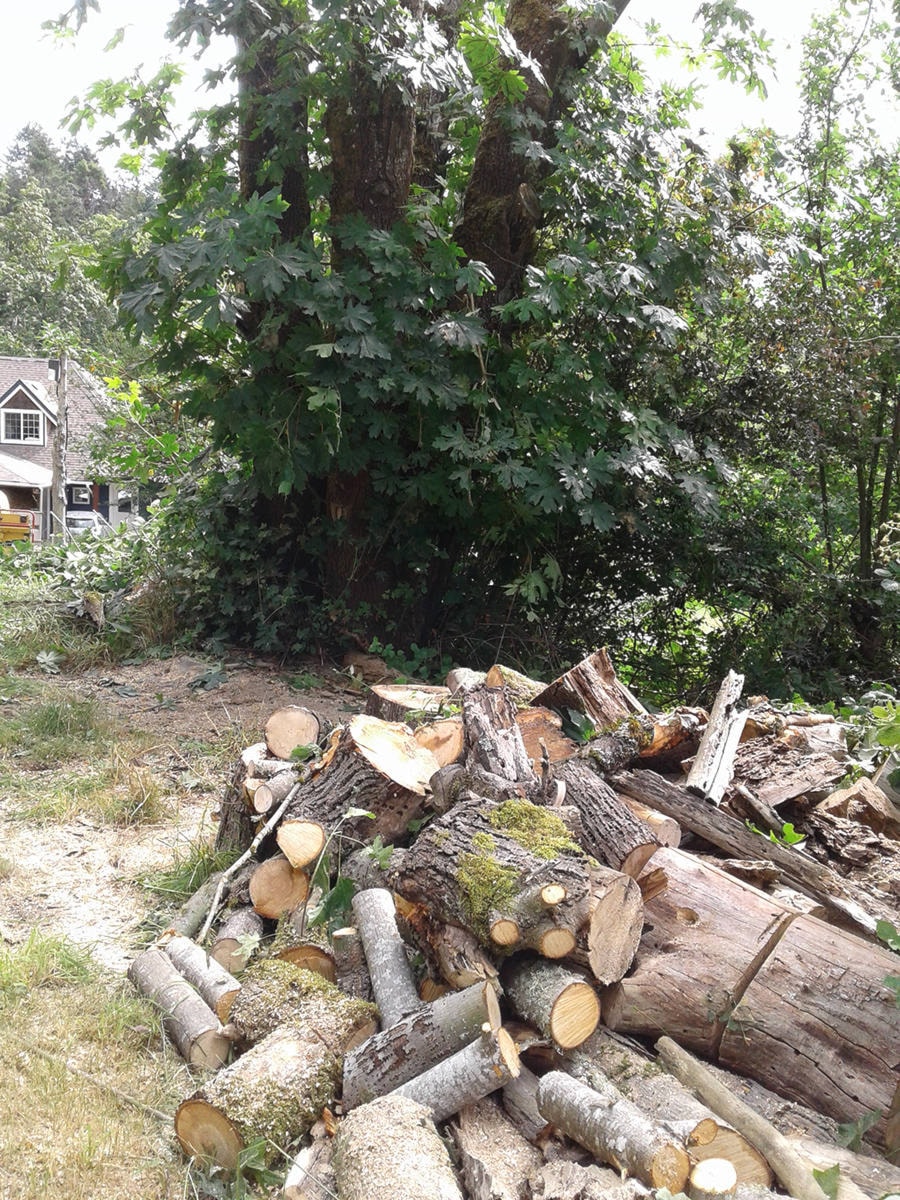My dying maple tree: firewood, or climate change fighter?
I refuse to cut my dying maple tree into firewood for my neighbour to burn. Instead, I am letting it rot into the ground. Am I being unfriendly?
Most people agree with certain social obligations, like wearing seat belts when driving a car or face masks during this pandemic. We do this to protect other people’s health. Well, for the same reason, I feel obligated to stop burning wood.
Of course, fires have been hugely beneficial to society and are an enjoyable cultural habit; the smell of burning leaves, the warmth of crackling flames. I like that stuff too, so maybe I’ll keep a few logs and enjoy burnt marshmallows with my grandkids. But not often.
Wood fires release particles into the air, which damage human lungs. And worse, burning one kilogram of wood releases more toxic greenhouse gases into the air than an equal weight of coal. And since I want to minimize future climate change disasters, it makes no sense for me to stop burning wood, but then give it away for others to burn.
And yes, some say that burning dead trees is OK because the carbon in that wood is recycled back into living trees by the natural forest carbon cycle. True, but not the whole truth.
The carbon cycle within forests is no longer healthy due to damage by global warming events, like pine beetle infestations and huge forest fires. And most old growth forests in B.C. have been destroyed.
Even if the forest’s carbon cycle was healthy, it would take over 100 years after burning my maple tree to reabsorb its released carbon dioxide gas into another equally-sized tree. Unfortunately, we don’t have 100 years to solve the climate change crisis.
One solution would be to chop down existing forests and bury the logs in deep water where they would rot extremely slowly due to both low temperatures and oxygen levels. Their carbon would not re-enter the atmosphere as a greenhouse gas anytime soon.
OK, that’s not practical. So don’t worry North Cowichan councillors, I will not throw my tree into nearby Quamichan Lake — it has enough problems.
Another option would be to use the wood to build long-lasting houses or furniture, or anything that would not get burnt. Sadly, nobody wants it.
No, my best option is to drag those wood chunks into the forest where they will rot slowly, keeping their carbon out of the air for many years. And yes, my Scottish blood cries out that this is wasteful.
But climate change is destroying lives — now. And will destroy many other lives if we keep pouring carbon into our polluted atmosphere. And all that rotting wood will feed slugs and other creatures, will increase soil fertility, and will help future forests to suck even more carbon out of the air. Perfect.
And there are alternatives to heating your house, like electric heat pumps.
So consider your social obligation to both your local and planetary neighbours, then find a way to stop burning anything — wood, gasoline, or oil. Like face masks, this will protect your neighbour’s health.
And I have supporters — by rotting into the soil without any complaint, my maple tree neighbour has become a climate change fighter.
Peter Nix, Cowichan Carbon Buster
Maple Bay
